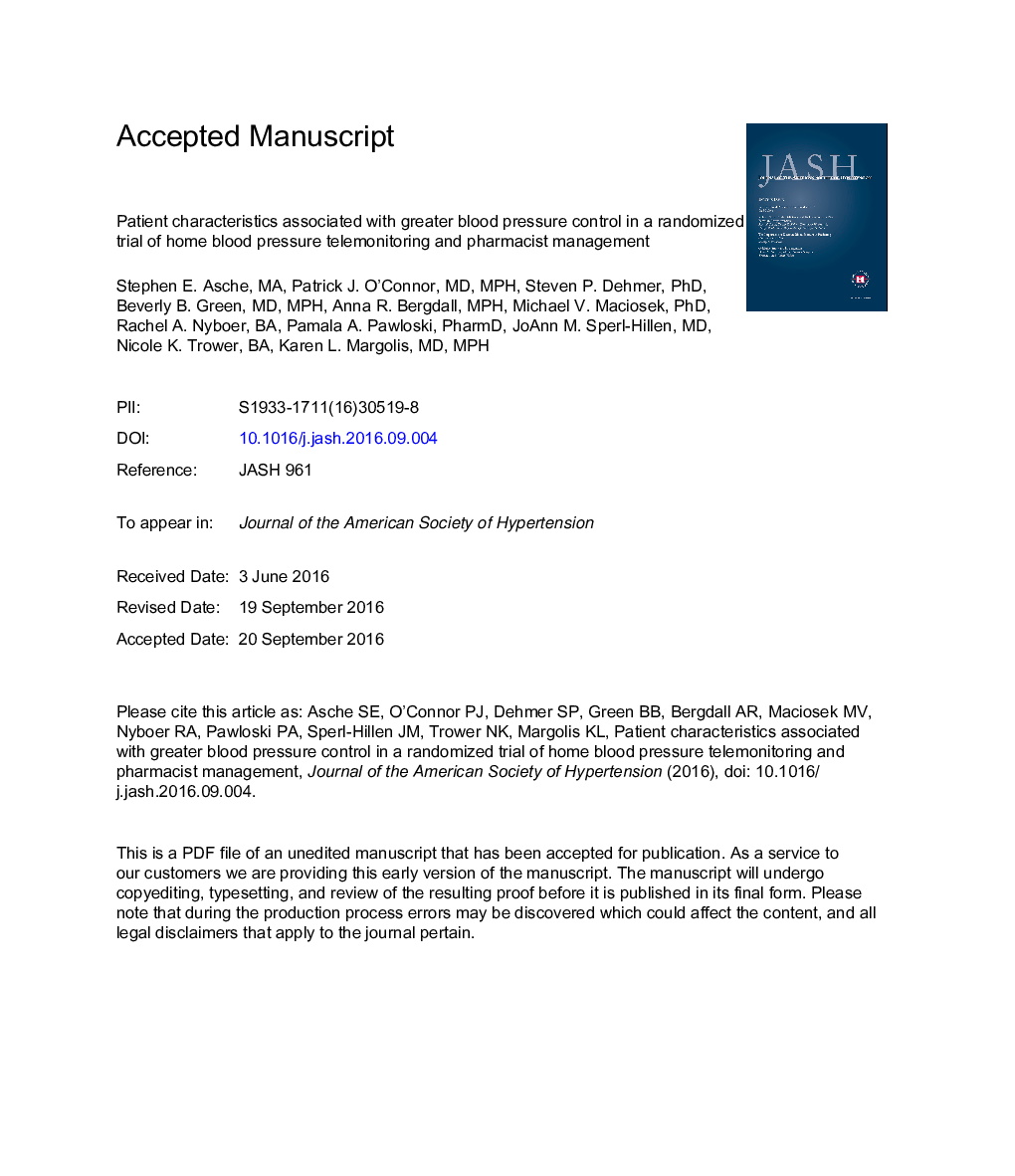| Article ID | Journal | Published Year | Pages | File Type |
|---|---|---|---|---|
| 5613958 | Journal of the American Society of Hypertension | 2016 | 22 Pages |
Abstract
This paper reports subgroup analysis of a successful cluster-randomized trial to identify attributes of hypertensive patients who benefited more or less from an intervention combining blood pressure (BP) telemonitoring and pharmacist management. The end point was BPÂ <Â 140/90Â mm Hg at 6-month follow-up. Fourteen baseline patient characteristics were selected a priori as subgroup variables. Among the 351 trial participants, 44% were female, 84% non-Hispanic white, mean age was 60.9Â years, and mean BP was 149/86Â mm Hg. The overall adjusted odds ratio for BP control in the intervention versus usual care group was 3.64 (PÂ <Â .001). The effect of the intervention was significantly larger in patients who were younger (interaction PÂ =Â .02), did not have diabetes (PÂ =Â .005), had high baseline diastolic BP (PÂ =Â .02), added salt less than daily in food preparation (PÂ =Â .007), and took 0-2 (rather than 3-6) antihypertensive medication classes at baseline (PÂ =Â .02). These findings may help prioritize patients for whom the intervention is most effective.
Related Topics
Life Sciences
Neuroscience
Endocrine and Autonomic Systems
Authors
Stephen E. MA, Patrick J. MD, MPH, Steven P. PhD, Beverly B. MD, MPH, Anna R. MPH, Michael V. PhD, Rachel A. BA, Pamala A. PharmD, JoAnn M. MD, Nicole K. BA, Karen L. MD, MPH,
